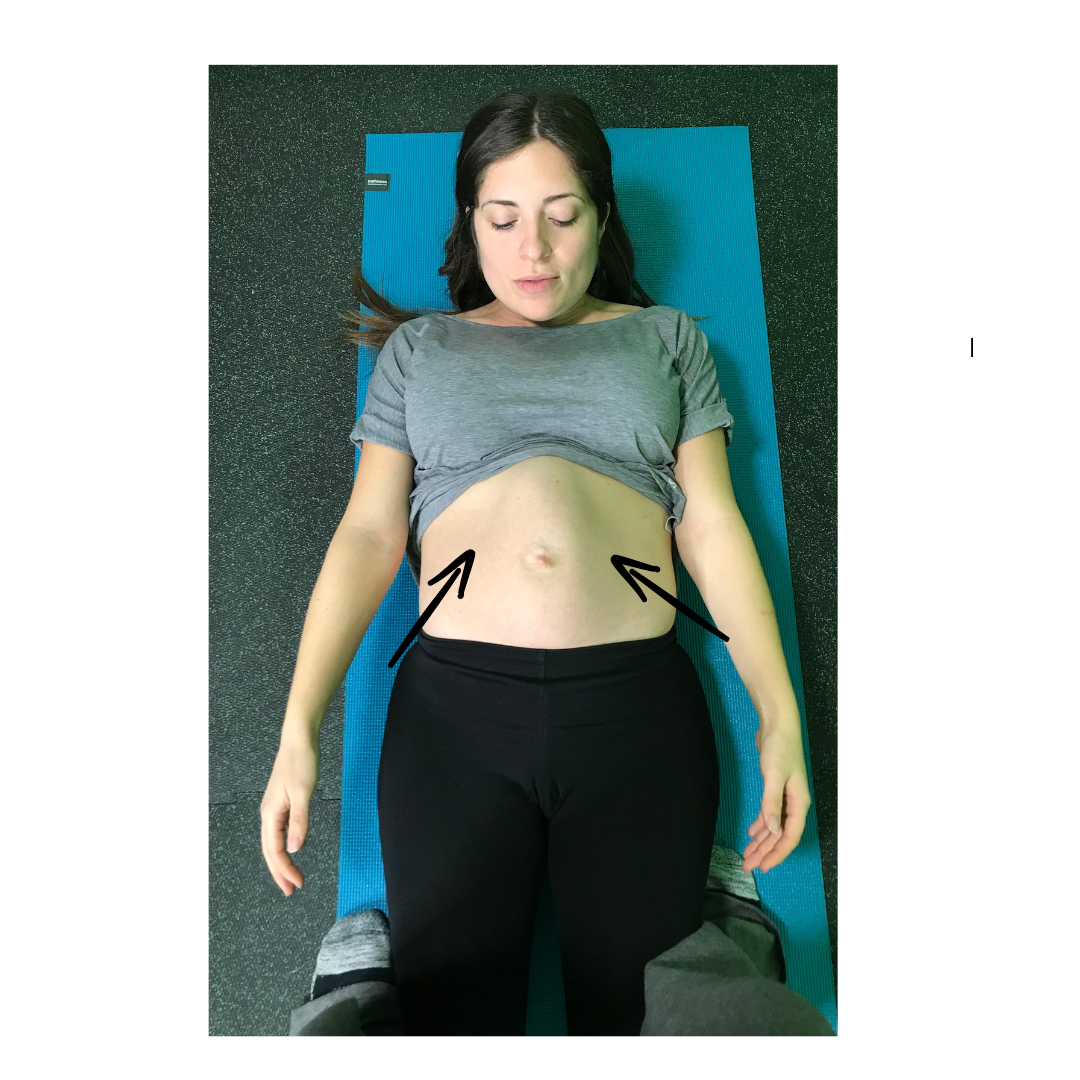The Core Exercise You Should Be Doing in Pregnancy
Trying to navigate how and when to exercise in pregnancy can be overwhelming and simply confusing. This is especially true, when it comes to the “core”. The biggest myth around core exercise in pregnancy is that you should avoid it completely.
We absolutely want to be working on your core strength and function during pregnancy. A strong core helps prevent back, hip and pelvic pain and helps you manage pressure inside the abdomen and pelvis, which will help prevent issues like bladder leakage, bowel issues, pelvic pain and prolapse symptoms.
Learning how to utilize and strengthen your core “system” during pregnancy can also help you manage Diastasis Recti (abdominal separation) both during pregnancy and postpartum.
First let’s talk about the “core” as a system.
Image used with permission from Pelvic Guru®, LLC www.pelvicglobal.com
Your deep core system is composed of 4 main muscle groups: your transversus abdominis (deepest layer of abdominal muscle), your pelvic floor, your multifidus (back stabilizers) and your diaphragm (breathing muscle). This group of muscles work as part of an integrated and coordinated system or team.
How it works:
As you inhale, your diaphragm lowers creating and increase in intra-abdominal pressure. Your belly and pelvic floor expand to accept this pressure. ( I like to think about a balloon expanding from all sides). Then as you exhale, your diaphragm lifts and your transversus abdominis and pelvic floor muscles contract.
Unfortunately, pregnancy challenges this system due to the constant hormonal and physical changes that occur as you progress through the trimesters. The belly (and uterus) get bigger, which means the abdominal muscles stretch and lengthen to accomodate. There is increased pressure and load on the pelvic floor (and bladder!). The baby starts to take up more space, which impacts the ability of the diaphragm to lower and shifts in centre of gravity (due to the increased load on the front of our body) can create postural shifts and result in increased pressure on the lower back and pelvis.
Image used with permission from Pelvic Guru®, LLC www.pelvicglobal.com
What about Diastasis Recti?
Diastasis Recti is the term given to the abdominal separation that occurs in pregnancy. It is important to note that this is a NORMAL physiological response to your growing belly and that research has shown by 34 weeks gestation, 100% of women will have some degree of diastasis, with approximately 40% of women having Diastasis Recti persist postpartum.
Image used with permission from Pelvic Guru®, LLC www.pelvicglobal.com
In pregnancy, the most obvious sign of Diastastis Recti (abdominal separation) is a tenting or coning along the centre of your belly when lifting your head up (see image below).
Image above is of abdominal coning (uncontrolled pressure) during a head lift.
This tenting and coning at the mid-line is a sign that the amount of pressure you are generating is too much for the abdominal fascia to tolerate and it’s popping outwards. Ideally in pregnancy, we want you to avoid exercises and movements that create this pattern.
Learning how to engage your core properly, can help you manage intra-abdominal pressure better, resulting in less pressure on your abdominal wall and pelvic floor.
See below for demonstrations and tutorials about how to utilize your breathing and deep core activation during pregnancy in a variety of positions (sitting, standing and all fours).
I hope you found the above videos and information helpful.
If you have questions about Diastasis Recti or core exercise in pregnancy or postpartum please reach out. We would love to help.




